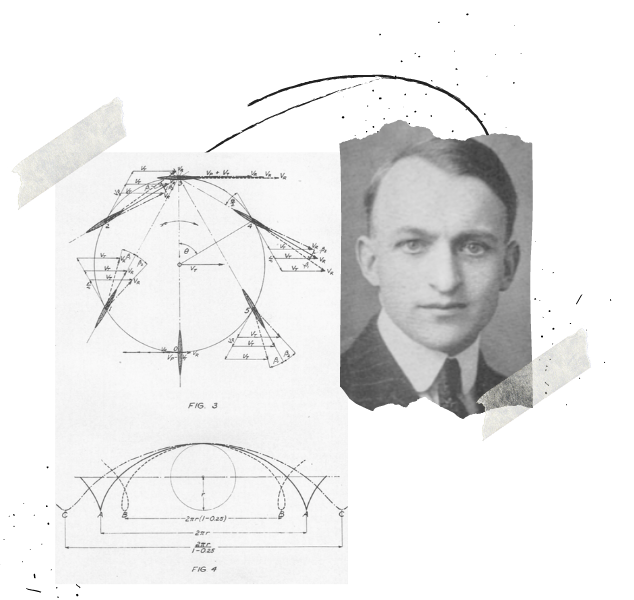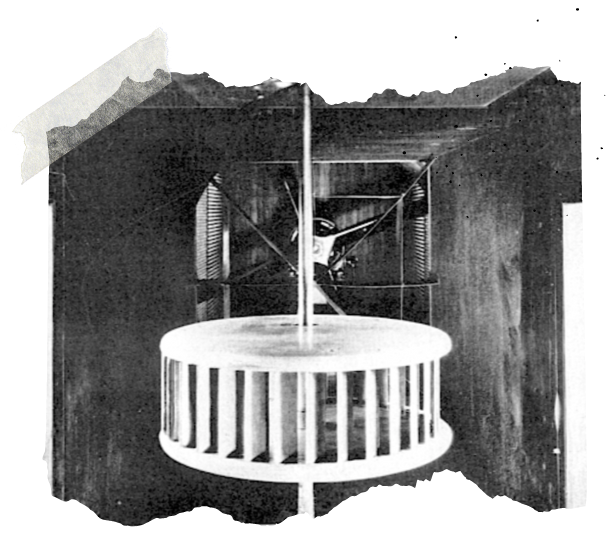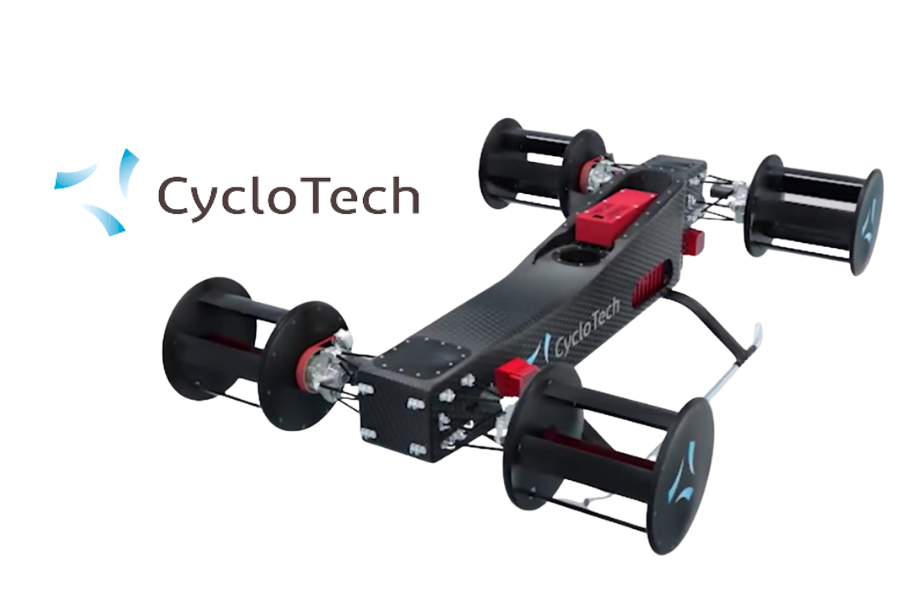
Frederick Kirsten and his mathematical renderings of cycloidal motion.
The concept
The idea had come when observing a flight of birds. Kirsten developed a concept for a new propulsion device that mimicked the flight of birds. He did this not by mimicking the flapping motions of the wing, but by mimicking the cycloidal motion he had observed.
Cycloidal propeller and its influence today
Kirsten developed a concept for a new propulsion device that mimicked the flight of birds. He did this not by mimicking the flapping motions of the wing, but by mimicking the cycloidal motion he had observed.
1921
The birth of the cycloidal propeller – Kirsten built a 10½” model of his propeller and tested it in the Boeing Aerodynamical Chamber. This small propeller, a version of which still exists in the Kirsten Wind Tunnel (KWT), was the first and simplest of many that Kirsten would design and build.

The model of Kirsten's cycloidal propeller.
A partnership with Boeing
Later that year, Kirsten met with William Boeing to show him his new invention.
Boeing invested to develop the propeller for both aerial and marine applications. Work started on a “cyclocopter,” dubbed the A-1, and a runabout boat, the M-1.
Impacts on today
Kirsten's work on the cycloidal propeller and use of the wind tunnel remains influential today.
2021
The company CycloTech had their "cyclo rotor" propulsion system. CycloRotors are compact and allow precise maneuverability and a stable transition from hover to flight even in harsh transitions due to the instant and direct control of magnitude and direction of thrust.
